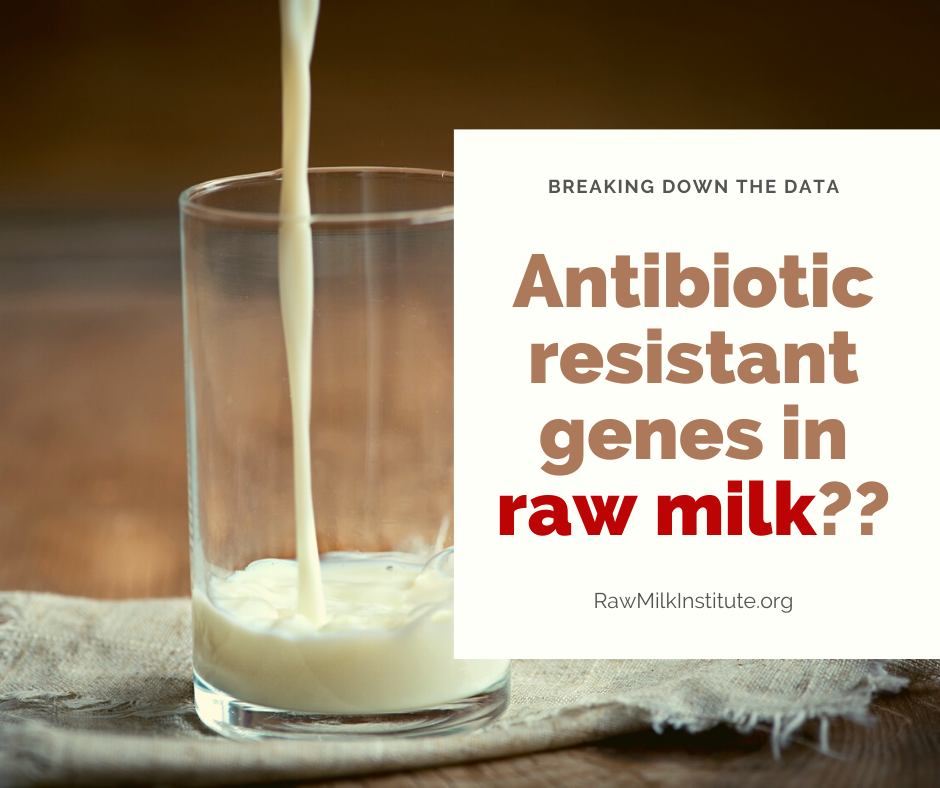Can You Drink Milk with Antibiotics? Essential Guide to Food Interactions
Why should certain antibiotics be avoided with milk. How do dairy products affect antibiotic absorption. What foods can interfere with antibiotics. Which foods are safe to consume while taking antibiotics. How can you maximize the effectiveness of your antibiotic treatment.
The Impact of Food on Antibiotic Effectiveness
When prescribed antibiotics for bacterial infections like urinary tract infections or strep throat, it’s crucial to understand that your diet can significantly influence the medication’s efficacy. The foods you consume while on antibiotics can either enhance or hinder their effectiveness, potentially impacting your recovery process.
But why exactly does food matter when taking antibiotics? The answer lies in the complex interactions between nutrients and medication within your body.
- Some foods can reduce antibiotic absorption
- Certain nutrients may block the medication’s action
- Specific food-drug interactions can intensify side effects
Understanding these interactions is key to ensuring your antibiotic treatment works as intended, helping you recover faster and more effectively.
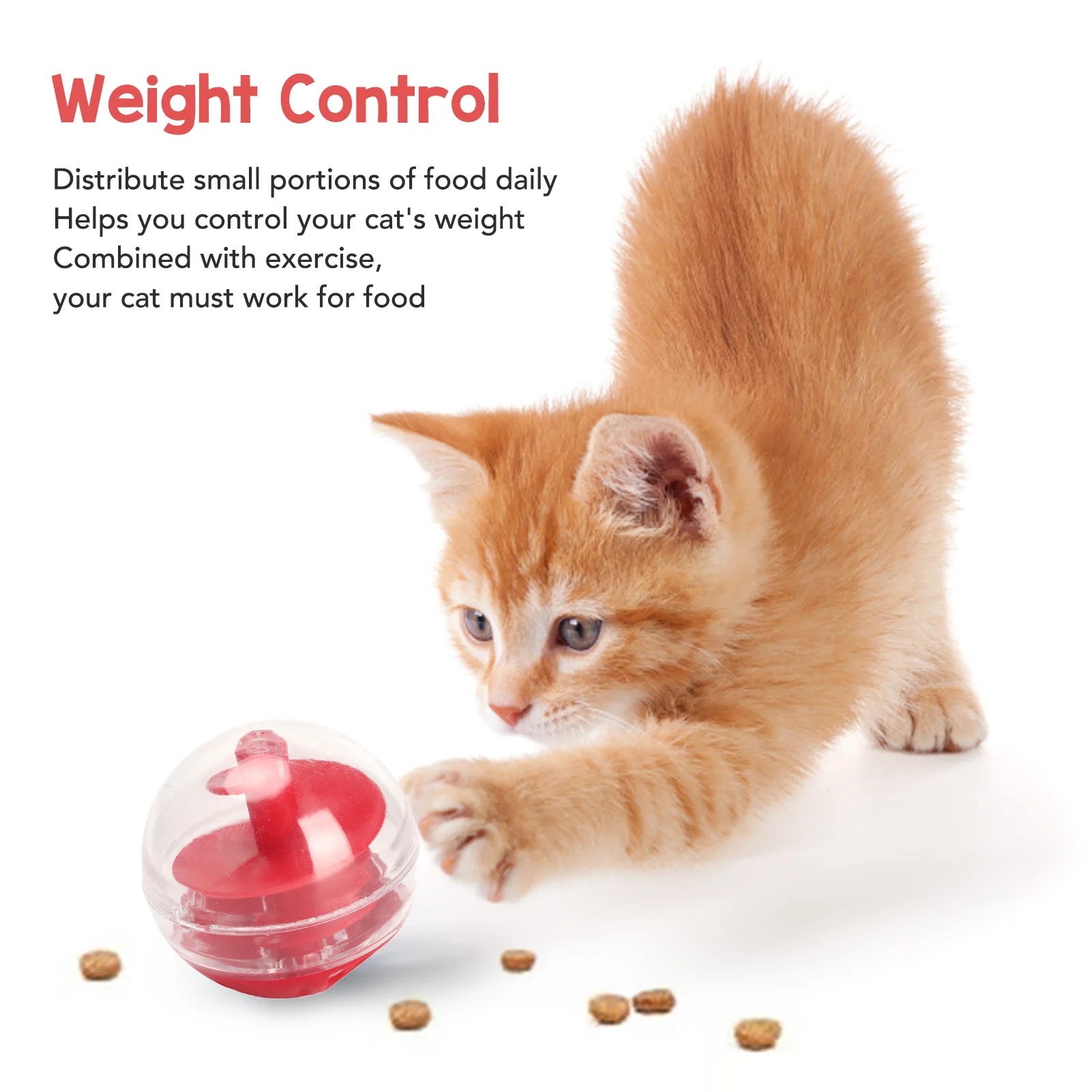
Dairy and Antibiotics: A Complex Relationship
One of the most common questions regarding antibiotic use is: Can you drink milk with antibiotics? The answer isn’t straightforward and depends on the specific antibiotic prescribed.
Calcium-rich foods, including dairy products like milk, cheese, yogurt, and even non-dairy sources like tofu and kale, can interfere with certain antibiotics. This interaction is particularly problematic with tetracyclines and fluoroquinolones.
How Does Calcium Affect Antibiotic Absorption?
When consumed together, the calcium in these foods can bind to the antibiotic molecules. This binding process creates a complex that your body cannot absorb effectively, potentially reducing the medication’s efficacy. As a result, less of the antibiotic enters your bloodstream, potentially compromising its ability to fight the infection.
Timing Is Key: Managing Dairy Consumption
If you’re taking antibiotics that interact with calcium, it doesn’t mean you have to eliminate dairy from your diet entirely. Instead, proper timing can help you enjoy your calcium-rich foods while still benefiting from your medication.

- Wait at least two hours after taking your antibiotic before consuming dairy products
- Avoid dairy for at least six hours before your next antibiotic dose
By following this timing strategy, you can minimize the interaction between calcium and your antibiotics, ensuring optimal absorption and effectiveness.
Beyond Dairy: Other Foods That Can Interfere with Antibiotics
While dairy products are often the first concern when it comes to antibiotic interactions, several other foods can also impact your medication’s effectiveness. Being aware of these potential interactions can help you make informed dietary choices during your antibiotic treatment.
Fortified Foods: Hidden Calcium Sources
Many processed foods are fortified with calcium and other minerals, which can pose similar issues as dairy products when taken with certain antibiotics. Common fortified foods include:
- Breakfast cereals
- Orange juice
- Non-dairy milk alternatives
These foods should be consumed with the same timing precautions as dairy products to ensure they don’t interfere with your antibiotic absorption.

High-Acid Foods: Potential Absorption Disruptors
Foods and beverages with high acid content can decrease the absorption of certain antibiotics into your system. Examples of high-acid foods include:
- Citrus fruits and juices (orange, grapefruit)
- Carbonated sodas
- Chocolate
- Tomato-based products
To minimize potential interactions, it’s advisable to space these foods at least two hours after taking your antibiotic and six hours before your next dose.
Caffeine: An Unexpected Antibiotic Interaction
Your morning cup of coffee might seem harmless, but caffeine can interact with some antibiotics in unexpected ways. How does caffeine affect antibiotic efficacy?
Some antibiotics can interfere with your body’s ability to metabolize caffeine, causing it to remain in your system longer than usual. This prolonged presence can lead to:
- Increased diuretic effects
- Jitters and anxiety
- Difficulty sleeping
To avoid these potential side effects, it’s best to stick to non-caffeinated beverages while on antibiotics. This precaution includes not only coffee but also tea, energy drinks, and some sodas.

Alcohol and Antibiotics: A Risky Combination
When it comes to alcohol consumption while on antibiotics, the general advice is clear: it’s best to abstain. But why is alcohol particularly problematic during antibiotic treatment?
The Dangers of Mixing Alcohol and Antibiotics
Consuming alcohol while taking certain antibiotics, particularly metronidazole, can lead to severe side effects, including:
- Intense nausea and vomiting
- Headaches
- Rapid heart rate
- Flushing of the skin
These reactions occur because some antibiotics interfere with your body’s ability to break down alcohol, leading to a buildup of toxic byproducts.
Hidden Sources of Alcohol
It’s not just alcoholic beverages you need to be wary of. Some common products contain alcohol or similar compounds that can interact with antibiotics:
- Mouthwash
- Cough medicine
- Cold and flu products
Always check the ingredients of over-the-counter medications and personal care products to ensure they don’t contain alcohol or propylene glycol while you’re on antibiotics.

Duration of Abstinence
How long should you avoid alcohol after finishing your antibiotic course? For most antibiotics, it’s recommended to wait at least 48 hours after your last dose before consuming alcohol. This waiting period allows your body to fully eliminate the antibiotic and reduces the risk of adverse reactions.
Supplements and Antacids: Unexpected Antibiotic Inhibitors
While multivitamins and antacids are often taken to support overall health, they can inadvertently interfere with antibiotic effectiveness. How do these common supplements impact antibiotic absorption?
Mineral Content in Supplements
Many multivitamins and antacids contain minerals that can bind to antibiotics, preventing their proper absorption. The most problematic minerals include:
- Magnesium
- Calcium
- Aluminum
- Iron
- Zinc
When these minerals bind to antibiotics, they form complexes that your body cannot absorb effectively, potentially reducing the medication’s efficacy.
Timing Your Supplement Intake
If you rely on multivitamins or antacids for your health, you don’t necessarily need to stop taking them during your antibiotic treatment. Instead, focus on proper timing:

- Take your supplements at least two hours after your antibiotic dose
- Wait at least six hours after taking supplements before your next antibiotic dose
By spacing out your supplement and antibiotic intake, you can minimize potential interactions while still benefiting from both.
Antibiotic-Friendly Foods: What to Eat During Treatment
While there are many foods to avoid or consume cautiously while on antibiotics, there are also plenty of antibiotic-friendly options that can support your recovery and help mitigate side effects.
Nourishing Soups
Broth-based soups can be an excellent choice during antibiotic treatment. They’re easy on the digestive system and can provide essential nutrients. Opt for soups that don’t contain cream, cheese, or tomatoes, such as:
- Chicken noodle soup
- Ramen
- Miso soup
- Lentil soup
These soups often contain prebiotic ingredients like garlic, onion, vegetables, and beans, which can help support the growth of beneficial bacteria in your gut.
Bland Foods for Sensitive Stomachs
If you’re experiencing gastrointestinal side effects from your antibiotics, bland foods can help settle your stomach. Consider incorporating:

- Plain or lightly salted crackers
- Peanut butter
- Non-citrus fruits
- Bananas
- Rice
- Applesauce
- Toast
The BRAT diet (Bananas, Rice, Applesauce, Toast) is particularly helpful for managing diarrhea, a common side effect of antibiotic use.
Hydration Is Key
Staying well-hydrated is crucial during antibiotic treatment. Water helps your body fight the infection, supports proper medication absorption, and can alleviate some gastrointestinal side effects. Aim to drink plenty of water throughout the day, especially if you’re experiencing diarrhea or other fluid-loss symptoms.
Probiotics and Fermented Foods: Allies in Antibiotic Treatment
While antibiotics are essential for fighting bacterial infections, they can also disrupt the natural balance of bacteria in your gut. This disruption often leads to side effects like diarrhea, nausea, and gas. How can you support your gut health during antibiotic treatment?
The Power of Fermented Foods
Fermented foods are rich in beneficial probiotics that can help maintain a healthy gut microbiome. Including these foods in your diet during and after antibiotic treatment can help offset some of the medication’s unpleasant side effects. Consider incorporating:
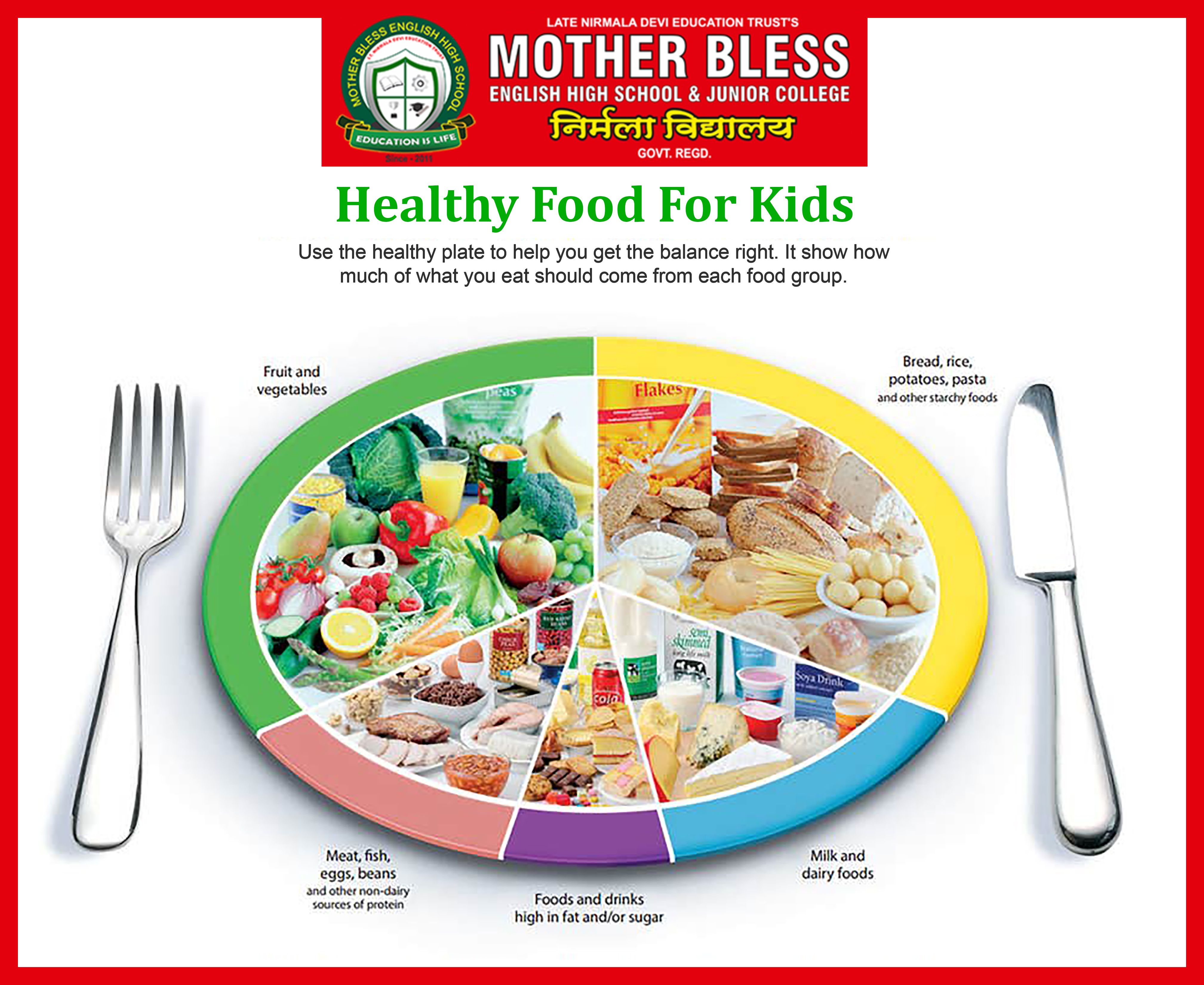
- Sauerkraut
- Kimchi
- Miso
- Fermented vegetables
- Kombucha
Yogurt and kefir can also be beneficial, but remember to space them appropriately from your antibiotic doses due to their dairy content.
Probiotic Supplements: A Targeted Approach
In addition to fermented foods, probiotic supplements can provide a concentrated dose of beneficial bacteria to support your gut health. When choosing a probiotic supplement, look for:
- Multiple strains of beneficial bacteria
- High colony-forming unit (CFU) count
- Delayed-release capsules to protect probiotics from stomach acid
It’s important to note that while probiotics can be beneficial, they should be taken separately from your antibiotic doses to ensure maximum effectiveness of both.
Timing Your Probiotic Intake
To get the most benefit from probiotics during antibiotic treatment, timing is crucial. Consider these guidelines:
- Take probiotics at least 2 hours after your antibiotic dose
- Continue taking probiotics for several weeks after finishing your antibiotic course
- Consult with your healthcare provider about the best probiotic strains for your specific situation
By incorporating probiotics into your routine, you can help restore balance to your gut microbiome and potentially reduce antibiotic-associated side effects.
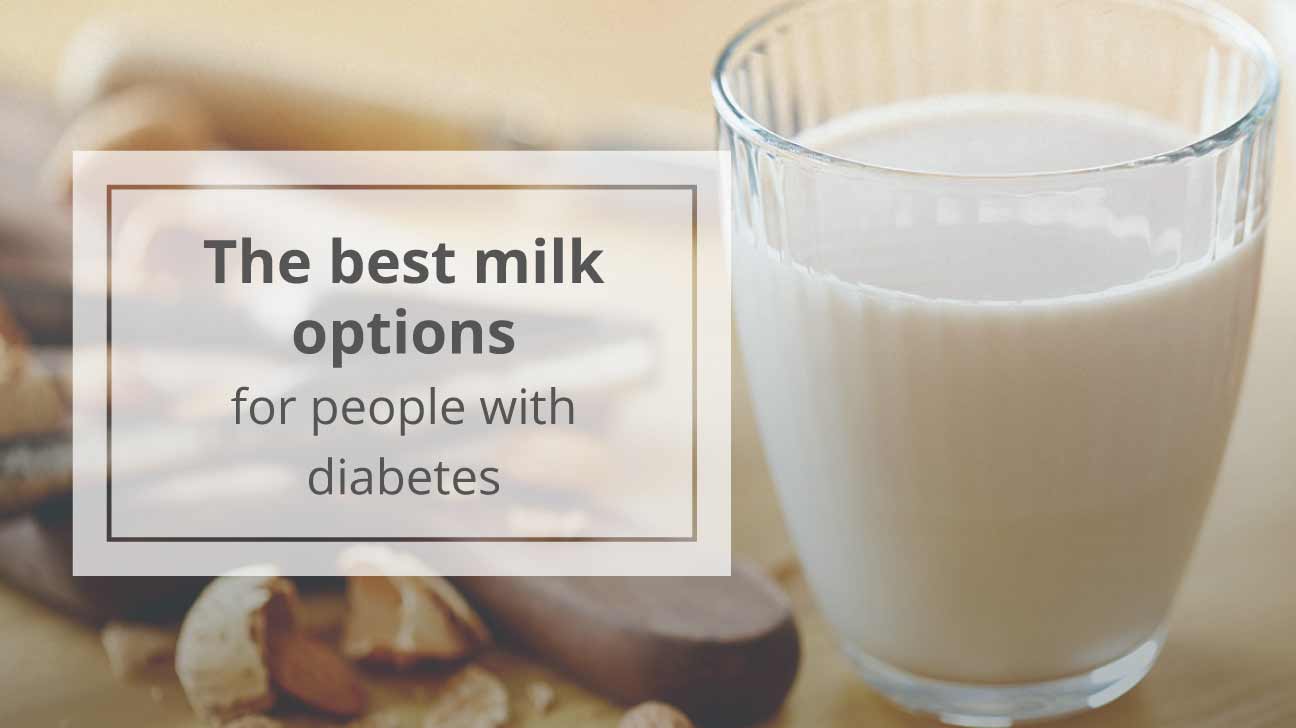
Understanding the complex interactions between food, supplements, and antibiotics is crucial for ensuring the effectiveness of your treatment. By making informed choices about what to eat and when, you can maximize the benefits of your medication while minimizing potential side effects. Remember, when in doubt, always consult with your healthcare provider or pharmacist for personalized advice on managing your antibiotic treatment.
Foods to Eat & Foods to Avoid
When you start to feel the pain of a urinary tract infection or strep throat, you may be prescribed a course of antibiotics in order to recover. Antibiotics may be needed for many types of bacterial infections, but what you eat while you’re on this medication can impact how well it works – and whether you’ll feel better.
Why Does It Matter What You Eat?
Certain foods can interact with an antibiotic by reducing how well it is absorbed by the body or even blocking the medication, while other foods can intensify side effects like gastrointestinal upset.
Antibiotics are a double-edged sword. Although these drugs can clear up your infection, they can also affect the natural balance of bacteria in your system. That can lead to the nausea, gas and diarrhea many people experience while taking antibiotics.
If you’re not familiar with a new medication, it’s always a good idea to ask for some guidelines from your pharmacist who is experienced at navigating food-drug interactions.
Lia Robichaud and Alicia Li, pharmacy interns at Samaritan Albany General Hospital, outlined some common foods that can impact antibiotics.
Foods Can Interfere With Antibiotics
Dairy and calcium-rich foods – Whether it’s cheese, milk, coffee creamer, yogurt or butter, the calcium in dairy products could be a problem. Tofu, kale and chia seeds are also high in calcium. When you eat these foods with certain antibiotics like tetracyclines or fluoroquinolones, the medicine can bind to the calcium which prevents it from being absorbed by your body. Space these foods to be at least two hours after you take your antibiotic and six hours before your next dose.
Fortified foods – Fortified foods can contain a high amount of calcium, creating the same problem that foods naturally high in calcium have – possibly interfering with your antibiotics. Common fortified foods include breakfast cereal, orange juice and non-dairy milk. Space these foods to be at least two hours after you take your antibiotic and six hours before your next dose.
High acid foods – Citrus fruits and juices like orange and grapefruit, soda, chocolate and tomato products have a high acid content, which could decrease how much medicine is absorbed into your system for certain antibiotics. Space these foods to be at least two hours after you take your antibiotic and six hours before your next dose. Caffeine – Some antibiotics can increase the effects of caffeine – and not in a good way. Antibiotics can keep your body from metabolizing the caffeine so it stays in your system longer. A cup of joe in the morning could lead to an increase in the diuretic effects of caffeine, jitters throughout the day and a sleepless night. Stick to noncaffeinated beverages while taking antibiotics, including plenty of water to stay hydrated.
Alcohol – Put cocktails or a glass of wine with dinner on hold. It’s best to completely abstain from alcohol until 48 hours after you’ve completed your course of antibiotics if you are taking metronidazole. Be on the lookout for alcohol or propylene glycol in mouth wash, cough medicine or cold and flu products, and avoid these as well. Consuming alcohol while taking certain antibiotics can cause severe nausea and vomiting, headache and other side effects.
Be on the lookout for alcohol or propylene glycol in mouth wash, cough medicine or cold and flu products, and avoid these as well. Consuming alcohol while taking certain antibiotics can cause severe nausea and vomiting, headache and other side effects.
Multi-vitamins and antacids – These products can contain minerals – primarily magnesium, calcium, aluminum, iron or zinc – that bind to the antibiotic and keep it from working. You may take multi-vitamins and antacids as long as you space them at least two hours after you take your antibiotic and six hours before your next dose.
What to Eat Instead
Soup – Enjoy broth-based soups that don’t rely on cream, cheese or tomatoes for flavor like chicken noodle, ramen, miso or lentil. These soups often have beneficial prebiotic foods like garlic, onion, vegetables and beans that help healthy bacteria regrow.
Bland foods – In general, foods for when you’re sick are also appropriate when you’re taking antibiotics. Plain or lightly salted crackers, peanut butter and non-citrus fruit are good choices. The BRAT diet (bananas, rice, applesauce, toast) can help with diarrhea from antibiotics.
Plain or lightly salted crackers, peanut butter and non-citrus fruit are good choices. The BRAT diet (bananas, rice, applesauce, toast) can help with diarrhea from antibiotics.
Water – Staying hydrated is important, especially when you’re sick. It helps your body fight the infection, your medication to work properly and to combat some of the gastrointestinal side effects of antibiotics.
Fermented foods – Sauerkraut, kimchi, miso, fermented vegetables and kombucha contain beneficial probiotics that can support your gut and can help offset some of the unpleasant side effects of antibiotics. Yogurt and kefir can also be helpful, particularly the Nancy’s brand. Ensure dairy products are appropriately spaced from your antibiotic.
Probiotic supplements – Taking probiotics while you’re on antibiotics can help provide beneficial bacteria to your system and may also help with diarrhea. Some common brands include Culturelle, RenewLife and Florastor. If your provider prescribes probiotics with your antibiotic, they can be taken at the same time and don’t need to be spaced. Otherwise, follow the directions on the label. Your provider may recommend taking a probiotic supplement for up to a week after finishing your course of antibiotics.
If your provider prescribes probiotics with your antibiotic, they can be taken at the same time and don’t need to be spaced. Otherwise, follow the directions on the label. Your provider may recommend taking a probiotic supplement for up to a week after finishing your course of antibiotics.
Take Antibiotics Properly
- Always follow the instructions on the medication label. Always finish your regimen, even if you start to feel better. Don’t save antibiotics for another time.
- Some antibiotics should not be broken, crushed or chewed, so check the label. If you have trouble swallowing pills, tell your provider who can discuss other options with you.
- If you miss a dose, take it as soon as you remember unless it’s almost time for your next dose, about three to four hours. Doses are timed to keep a consistent amount of medicine in your body. Taking the doses too close together or taking a double dose can increase your side effects and doesn’t have any benefit.

- If you miss all of your doses in a 24-hour period, call your provider.
- If the label says to take with food, you can take your medicine with a meal or a little snack like crackers and fruit. Food helps the body to absorb certain medications and can reduce side effects.
- If the label says to take on an empty stomach, time your meals to be either one hour after you take the medicine or two hours before your next dose. Some medicines work better if there is no other food in your stomach.
After You’re Finished With Antibiotics, Help Healthy Bacteria Grow
According to a study of intestinal bacteria published in the journal Clinical Infectious Diseases, gut microbiota mostly repopulate within two to four weeks of finishing a course of antibiotics. However, it can take up to a year or longer for your gut microbiome to fully recover.
Other bacterial colonies on your body can also be affected by antibiotics. For example, women can occasionally develop a yeast infection after a round of broad-spectrum antibiotics, because the antibiotics clear out beneficial bacteria in the vagina.
You can encourage a diverse population of beneficial bacteria to regrow and keep you healthy by making prebiotic and probiotic foods a priority. It’s also helpful to limit sugar and processed foods for several weeks, as these can suppress healthy bacterial growth.
Antibiotics are sometimes necessary but the medical community is still learning the full long-term effects on the body. Take your medicine as prescribed and talk to your pharmacist if you have any questions about the right way to take antibiotics.
Work with a pharmacy you trust. Find a Samaritan Pharmacy location near you.
Doxycycline and Dairy: Should You Avoid Milk?
- What is doxycycline?
- Can you mix doxycycline and dairy?
- How long after taking doxycycline can you eat dairy?
- Other doxycycline interactions
- Potential side effects of doxycycline
If you have any medical questions or concerns, please talk to your healthcare provider. The articles on Health Guide are underpinned by peer-reviewed research and information drawn from medical societies and governmental agencies. However, they are not a substitute for professional medical advice, diagnosis, or treatment.
The articles on Health Guide are underpinned by peer-reviewed research and information drawn from medical societies and governmental agencies. However, they are not a substitute for professional medical advice, diagnosis, or treatment.
The antibiotic doxycycline is used to treat a wide variety of bacterial infections and health conditions. However, some types of foods, supplements, and medications may impact the effectiveness of this medication, including dairy products.
Milk and dairy products change how your body absorbs doxycycline, making the medication less effective. Let’s learn more about what doxycycline is and how dairy affects it.
Doxycycline belongs to a class of antibiotics called tetracyclines that stop the growth of bacteria. As a result of treatment, the bacteria die, and the infection clears (Patel, 2022).
It is available in tablet, capsule, and liquid forms and is prescribed to treat a range of infections and conditions like (Patel, 2022):
- Acne
- Dental infections
- Eye infections
- Lung infections
- Lyme disease
- Rosacea
- Sexually transmitted infections (STIs), such as chlamydia and syphilis
- Sinus infections
- Skin infections
- Urinary tract infections (UTI)
It is also used as a preventative medication for malaria.
Doxycycline also falls under many brand names, including:
- Vibramycin
- Doryx
- Oracea
- Acticlate
- Atridox
- Doxy 100
- Doxy 200
Doxycycline for acne: what is it, how does it work, side effects
Acne
Last updated: Nov 04, 2021
5 min read
You shouldn’t take doxycycline (or other tetracycline antibiotics) with dairy products because dairy can interfere with how your body absorbs the medication—ultimately reducing how effective it is. This is especially the case if you consume dairy products around the same time that you take doxycycline.
The reason milk and other dairy products affect the body’s absorption of doxycycline is that they contain calcium. Calcium reacts with doxycycline in a process called chelation. This process forms a new compound called chelate, which is harder for your intestines to absorb.
Because of this interaction with calcium, less doxycycline is absorbed by your gastrointestinal tract, and the medication becomes less effective.
The effects of milk products on doxycycline have been well established. An older, smaller study from 1989 showed consuming milk at the same time as doxycycline decreased its bioavailability and absorption by about 30% (Meyer, 1989).
Antacids and dietary supplements containing calcium may also have similar effects. You should avoid taking these products at the same time that you take your doxycycline prescription.
You don’t have to completely remove dairy from your diet. Just pay attention when you’re consuming dairy products. It’s recommended to avoid consuming dairy products within 2–3 hours of taking doxycycline (Patel, 2022). For example, if you choose to take doxycycline at 8 a.m., you’d want to avoid eating dairy from about 5 a.m.–11 a.m.
A few common dairy foods you’ll want to avoid around the time you’re taking tetracycline antibiotics include:
- Milk
- Buttermilk
- Butter
- Cream and heavy cream
- Ice cream
- Cheese
- Cream cheese
- Cottage cheese
- Kefir
- Yogurt and frozen yogurt
- Whey
- Desserts made with dairy products
- Ghee
Antibiotics and birth control: can you take them together?
Birth control
Last updated: Jan 05, 2021
6 min read
A number of other minerals and substances can interfere with doxycycline. This is why it’s usually recommended to take doxycycline on an empty stomach because of how these compounds may interact with the drug.
This is why it’s usually recommended to take doxycycline on an empty stomach because of how these compounds may interact with the drug.
Aside from calcium, there are other minerals in various foods and supplements that can affect how your body absorbs tetracycline antibiotics, including (Patel, 2022):
- Iron
- Magnesium
- Sodium bicarbonate
- Aluminum
Eggs, beef, and kale, for example, are iron-rich foods that should be avoided when taking this antibiotic. Doxycycline can also make you more sensitive to the common side effects of alcohol, especially the effects on movements and body control (McIver, 2012). On that note, if you’re fighting an infection and are on antibiotics, it’s better to cut the alcohol for the time being.
Some medications may interact with doxycycline, too, including retinoids and some blood thinners (Warner Chilcott, 2008). Talk with your healthcare provider about any medications or supplements you take or plan to take while undergoing doxycycline treatment.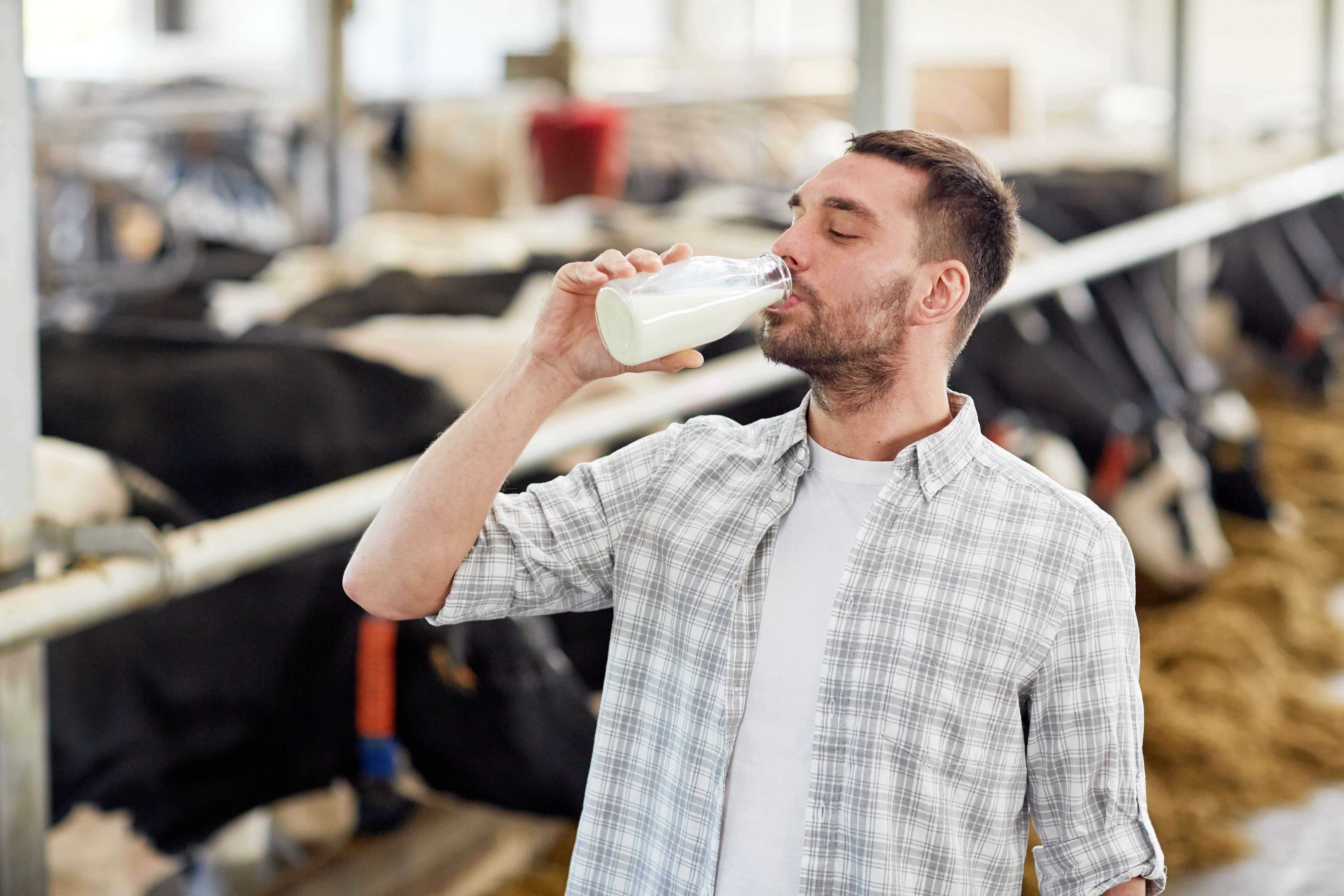 Your doctor will help you create a plan for safely taking doxycycline and answer any questions you may have.
Your doctor will help you create a plan for safely taking doxycycline and answer any questions you may have.
Doxycycline has been used for decades. It’s generally considered safe for most people. Still, it can lead to side effects like any medication. Potential side effects of doxycycline can include (Patel, 2022):
- Diarrhea
- Sensitivity to sunlight and increased risk for sunburn
- Nausea and vomiting
- Skin rash and hives
- Headaches
- Tooth discoloration
- Chest pain
- Migraines
- Yeast infections
- Liver damage
- Increased lupus symptoms
What’s the strongest antibiotic to treat a UTI?
UTI (urinary tract infection)
Last updated: May 07, 2021
7 min read
Be sure to talk with your healthcare provider about how foods, supplements, and any medications you’re currently taking or plan to take may impact doxycycline. They can help you create a safe and effective treatment plan and answer any questions you may have.
They can help you create a safe and effective treatment plan and answer any questions you may have.
- McIver, S. R., Muccigrosso, M. M., & Haydon, P. G. (2012). The effect of doxycycline on alcohol consumption and sensitivity: consideration for inducible transgenic mouse models. Experimental Biology and Medicine, 237(10), 1129–1133. doi:10.1258/ebm.2012.012029. Retrieved from https://pubmed.ncbi.nlm.nih.gov/23019604/
- Meyer, F. P., Specht, H., Quednow, B., et al. (1989). Influence of milk on the bioavailability of doxycycline–new aspects. Infection, 17(4), 245–246. doi:10.1007/BF01639529. Retrieved from https://pubmed.ncbi.nlm.nih.gov/2767766/
- Patel, R. S. & Parmar, M. (2022). Doxycycline Hyclate. StatPearls. Retrieved on May 5, 2022 from https://www.ncbi.nlm.nih.gov/books/NBK555888/
- Warner Chilcott. (2008). Highlights of prescribing information. Retrieved from https://www.accessdata.fda.
 gov/drugsatfda_docs/label/2008/050795s005lbl.pdf
gov/drugsatfda_docs/label/2008/050795s005lbl.pdf
Felix Gussone is a physician, health journalist and a Manager, Medical Content & Education at Ro.
compatibility, possible consequences, medical opinions
A real breakthrough in medicine occurred with the discovery of antibiotics, but many do not forget about the benefits of familiar foods and try to combine drug therapy with traditional methods of health promotion as often as possible. In the case of antibacterial drugs, this is strictly prohibited, since they are among the most “harmful” medicines, and taking them simultaneously with other medicines and some products can, on the contrary, do harm. Is it possible to milk while taking antibiotics will be discussed further.
Characteristics of drugs
Antibacterial drugs today have a biological or semi-synthetic nature, which allows them to expand their spectrum of action and fight a large number of different diseases. When ingested, antibiotics have a bactericidal and bacteriostatic effect.
Let’s find out how probiotics are better when taking antibiotics?…
Antibiotics have to be taken by every person during various diseases, so there is…
Their effect is markedly reduced by the use of certain products during therapy. So, many people know that drinking alcohol during treatment with bactericidal drugs is prohibited, since this combination puts a heavy burden on the liver and reduces the effectiveness of treatment. A similar situation can develop with acidic foods and carbonated drinks, but are milk and antibiotics compatible?
General data
On this occasion, scientists have already conducted many studies that have proven the incompatibility of this product and drugs. Simultaneous treatment with antimicrobials and milk consumption may neutralize the benefits of food or even negate the therapeutic effect of medications. The specific reaction depends on the group to which the drug belongs and this information should be considered in more detail.
Gynoflor suppositories: instructions for the preparation, composition, analogues and…
This pharmacological agent is produced in tablet form for intravaginal…
Penicillin
Amoxicillin is the most common drug in this group today. Its wide spectrum of action allows the drug to be used for the effective treatment of inflammation of the throat, respiratory tract, genitourinary system, purulent infections and the prevention of complications after surgical interventions. The semi-synthetic nature of the drug explains not only its effectiveness, but also the presence of some contraindications, as well as compatibility features. Amoxicillin trihydrate may react with other medicines and food, which slow down its absorption and reduce the therapeutic effect. This also applies to the animal product in question, so it is forbidden to drink milk when taking antibiotics of this group. If necessary, for example, in the treatment of children, the interval between feeding and taking medication should be at least 2 hours.
Fermented milk products in antibacterial therapy, on the contrary, are welcome, because they can normalize the intestinal microflora disturbed by antibiotics, but also only with the observance of the time interval. Also, to get the maximum benefit from food, products should be chosen natural, without flavors, dyes and other additives. Such nutrition will help to avoid dysbacteriosis and achieve a speedy recovery.
How to take antibiotics? With what to drink antibiotics …
The use of antibiotics is a necessary measure to combat pathogenic microflora in many…
Macrolides
The most popular drug in this group is Azithromycin. Most often it is used in the treatment of respiratory infections, but its spectrum of action does not end there. The high efficiency of the drug allows you to completely overcome infections in just 3 days of treatment, which is why there are only 3 doses in the package of the drug. The low level of toxicity and a small list of contraindications at the same time allows you to prescribe an antibiotic even during pregnancy.
Combining milk and antibiotics in this case is also not allowed, even if the medication is taken only once a day. The action of macrolides and their absorption into the body is markedly reduced by the use of this food product. As for fermented milk products, they can be included in the diet, but only if the minimum time interval between meals and medications is observed. Another important requirement is the absence of non-natural additives in the products.
Tetracyclines
Drinking milk after antibiotics is strictly prohibited in this case. Any products containing calcium completely neutralize the effect of the drug, since when it enters the body, they form chelates with the active substances of the drug. Thus, in the treatment of tetracycline antibiotics, it is forbidden to use any fermented milk products. In addition, this group of antibacterial drugs is characterized by high toxicity and a not too wide spectrum of action, therefore it is no longer so popular in medicine.
Tetracyclines can be used in the treatment of severe infectious diseases, pneumonia, tonsillitis or bronchitis. In some cases, despite all the shortcomings of the antibiotic, you still cannot do without it, so you should study all its features in advance. The medicine should be taken separately from any food, as it slows down its absorption. It is best to choose a time 30 minutes before a meal or 60 minutes after. You can drink milk after antibiotics only a day after the end of the course of therapy.
New drugs
The current generation of antibacterial drugs is no longer so attached to food, is characterized by high bioavailability and minimal toxicity. When treating with just such drugs after antibiotics, you can drink milk, keeping an interval of only 2 hours. Such recommendations are given only in order to enable the active substances to have the maximum effect on the body.
The combination of dairy and sour-milk products with new generation antibacterial drugs does not cause any harm.
What is added to milk
Milk and antibiotics for the treatment of diseases are often incompatible things, but such substances may be present in a product purchased in a store. The fact is that in order to increase the shelf life of perishable products, a small amount of antibacterial substances is added to them at the production stages. In addition, to prevent the cows that give milk from getting sick, antibiotics are also added to their feed.
It turns out that a person receives a certain proportion of antibacterial drugs simply by drinking milk, not to mention the dosage prescribed by a doctor for the treatment of a certain ailment. Thus, the reaction in the body can be caused not only by the food itself and the drug, but also by incompatibility with the additional substances contained. Consequences can be:
- allergic reactions;
- immunosuppression;
- decrease in susceptibility to antibacterial drugs.
Given this information, it is better to abstain from milk during treatment and strictly follow the instructions for the drug and the doctor’s recommendations.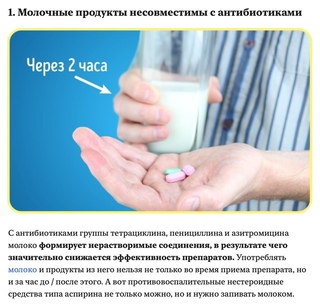
Negative effects of combining
Unfortunately, not many people are interested in the compatibility of food and antibiotics on their own, and doctors do not always talk about it, so situations in which antimicrobial therapy is carried out in parallel with unacceptable nutrition are not uncommon. Is it possible to milk with antibiotics and what consequences this combination can cause depends on the group of the drug.
A medication that is allowed to be taken with food will not cause any negative effects. This is because such recommendations are usually available only for drugs other than tetracyclines, penicillins, or cephalosporins. At the same time, milk calcium will bring its benefits to the body, and the drug will help to cope with the disease in full force.
If the antibiotic does not belong to a group incompatible with milk, but is not recommended for intake with food, then its effect will be reduced and slowed down by any products.
Simultaneous consumption of milk and antibiotics of the penicillin group will necessarily reduce the effectiveness of treatment. In addition, all the benefits of any dairy products will not be absorbed, since the lactic acid bacteria will die.
In addition, all the benefits of any dairy products will not be absorbed, since the lactic acid bacteria will die.
The most dangerous combination for health is the use of any dairy and sour-milk products and antibacterial drugs of the tetracycline group. In this case, the effect of the drug completely disappears and the body will not receive any benefit or help in treatment.
In general, it is better not to risk your health and give up milk during antibiotic therapy. In this case, it is always necessary to drink antibiotics only with a large amount of clean or boiled water. The only exception is Fuzidin sodium, which is recommended to be washed down with milk or sweet syrup to reduce irritation.
Fermented milk products
To get the most benefit from the treatment, you should drink milk while on antibiotics only in the rare cases permitted by the instructions. Annotations usually do not contain strict restrictions in relation to fermented milk products, since a person will receive more benefit from such food than harm. Of course, subject to a minimum interval of 2 hours between medication and food. It is good to restore the intestinal microflora during such treatment with natural yoghurts without flavors and dyes, yogurt, kefir and other fermented milk products of different fat content. Low-fat sour cream will be especially useful for children, as it stimulates digestion, is easily digestible, does not cause allergies and contains many useful vitamins, minerals and organic acids.
Of course, subject to a minimum interval of 2 hours between medication and food. It is good to restore the intestinal microflora during such treatment with natural yoghurts without flavors and dyes, yogurt, kefir and other fermented milk products of different fat content. Low-fat sour cream will be especially useful for children, as it stimulates digestion, is easily digestible, does not cause allergies and contains many useful vitamins, minerals and organic acids.
Features of nutrition during therapy
To prevent the occurrence of dysbacteriosis during antibiotic therapy and after it, one should take into account the degree of influence of proteins, fats and carbohydrates consumed with food on the drugs taken.
Thus, the absorption of any antibiotic will be slowed down by eating fatty foods, which reduce the production of digestive juice. Absorption of drugs in this case will be carried out for a long time.
A high concentration of protein in food adversely affects the effectiveness of sulfa drugs. Milk after taking antibiotics of this group is recommended to drink only skimmed milk, at least after 2 hours.
Milk after taking antibiotics of this group is recommended to drink only skimmed milk, at least after 2 hours.
Meat, legumes, fish and cheese should be limited. The opposite situation develops with antibacterial drugs of the nitrofuran series. With insufficient amounts of proteins in food, they lose their effectiveness.
When taking macrolides, cephalosporins and sulfonamides, carbohydrate intake should also be monitored, since in large quantities it slows down gastric emptying and complicates the work of antibiotics.
It is strictly forbidden to take alcohol during treatment with any antibacterial drugs.
Diet after therapy
If fermentation processes predominate in the intestines after treatment, then the diet should be made according to the following recommendations:
- more protein foods – meat, fish, eggs;
- fewer simple carbohydrates – sweets, potatoes, muffins;
- restriction of dietary fiber – bran, raw vegetables, nuts;
- exclusion of gas provocateurs – products with a high content of essential oils, carbonated drinks, milk, and so on.

Getting rid of putrefactive processes is carried out by daily fasting on decoctions of herbs and further restriction of proteins in the diet, increasing carbohydrates, dietary fiber and fermented milk products.
Constipation is eliminated mainly by prebiotics and products that improve intestinal motility. These include dairy products, raw vegetables and fruits, fatty foods, dried fruits and others.
It is important to drink plenty of fluids when recovering the body.
Reviews of doctors
Experts assure that antibiotics with milk can be combined in the daily diet, the main thing is to do it correctly and in moderation. You should always follow your doctor’s advice and follow the warnings on the medication label. In most cases, it is enough to simply reduce the consumption of milk to a minimum and drink it strictly in between doses of the medication. How long after milk can antibiotics be taken? As a rule, an hour is enough for the product to be completely digested.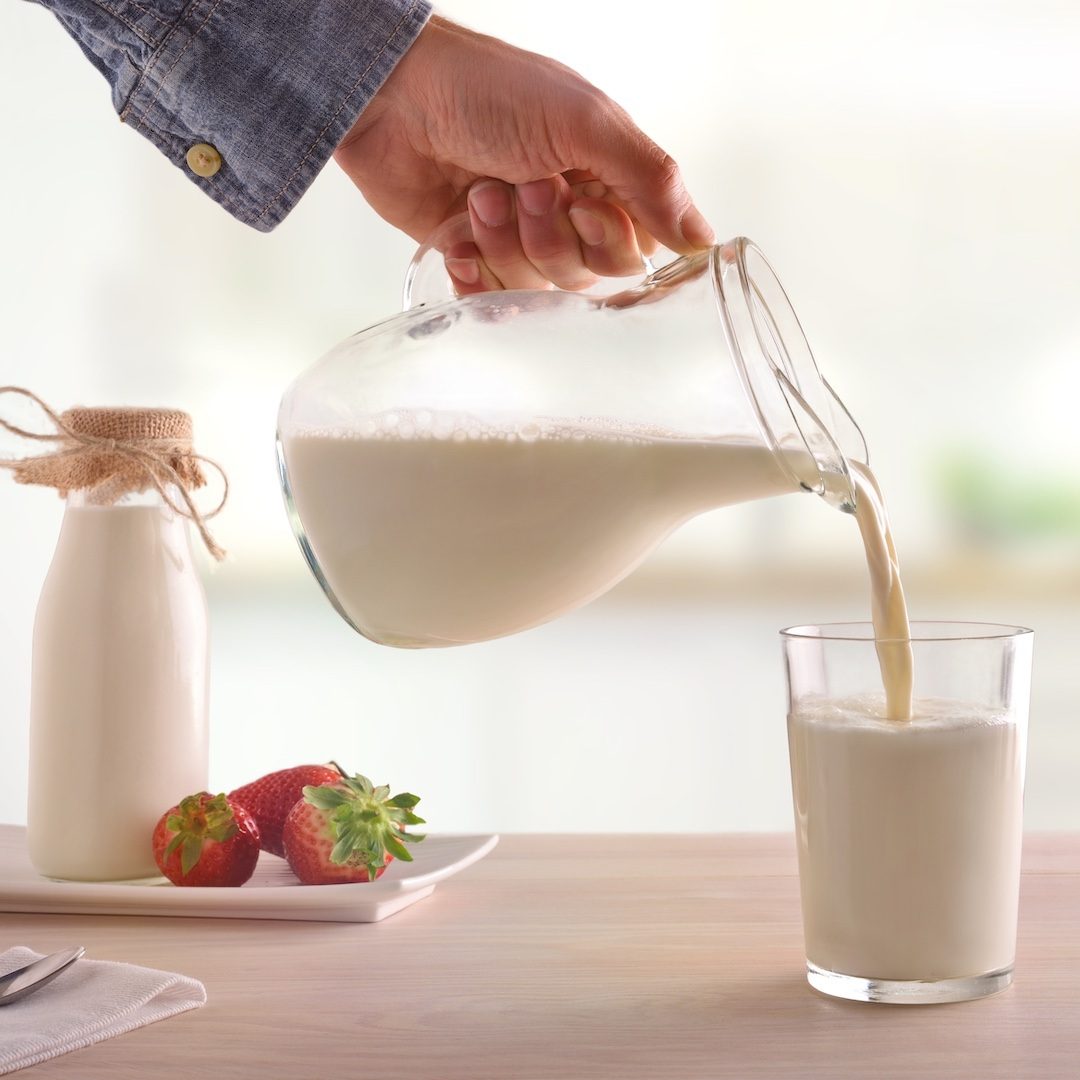 If you want to drink a glass of milk after taking the medicine, then you will need to wait at least 2 hours, since the medicines cannot be broken down so quickly by their nature.
If you want to drink a glass of milk after taking the medicine, then you will need to wait at least 2 hours, since the medicines cannot be broken down so quickly by their nature.
If possible, it is better to refuse such a combination altogether.
Antibiotics in milk: how not to cause harm to health?
Komsomolskaya Pravda
Search results
2 Drug residues can be found in milk produced both in large factories and on small farms
Drug residues can be found in milk produced both at large factories and on small farms Photo: GLOBAL LOOK PRESS
Antibiotics are used in animal husbandry everywhere – chickens, cows, even fish – would get sick much more often if they were not “fed” with drugs. But along with their meat, eggs and milk, antibiotics also end up on our table. What this can be fraught with, we have written more than once: microorganisms are becoming more resistant (resistant) to drugs. Accordingly, if we become seriously ill, medicines may not help us. The World Health Organization also warns about this.
The World Health Organization also warns about this.
Cows in both large and small farms give milk all year round. And this causes inflammation in their body. Due to the crowding of animals, crowding, various infections often occur. Animals get sick, and to cure them, the same drugs are used that are used for people. Antibiotics, for example, treat mastitis in cows, so it is impossible to find milk without them at all.
Theoretically, the use of antibiotics is safe: the law sets limits that manufacturers must comply with, their implementation is controlled by Rospotrebnadzor. However, if you constantly drink milk in which the norms are exceeded, health problems may begin.
More than 70 types of antibiotics
– More than 70 types of antibiotics are used in animal husbandry, – says Svetlana Sheveleva, Doctor of Medicine, Head of the Laboratory of Biosafety and Nutrimicrobiome Analysis of the Research Institute of Nutrition of the Russian Academy of Medical Sciences. – Four basic groups are controlled in our country: chloramphenicol, streptomycin, tetracycline and penicillin. It is not the antibiotics themselves that get into the milk, but their residual amount. Therefore, drinking milk with a residual amount of antibiotics and taking a similar drug are unequal things. Instantaneous reactions to such milk are rare – only if you have an allergic reaction to penicillin. However, if we drink milk every day with a residual amount of antibiotics that exceeds the allowable limits, the body gets used to these substances.
– Four basic groups are controlled in our country: chloramphenicol, streptomycin, tetracycline and penicillin. It is not the antibiotics themselves that get into the milk, but their residual amount. Therefore, drinking milk with a residual amount of antibiotics and taking a similar drug are unequal things. Instantaneous reactions to such milk are rare – only if you have an allergic reaction to penicillin. However, if we drink milk every day with a residual amount of antibiotics that exceeds the allowable limits, the body gets used to these substances.
What the new technical regulation changes
In Russia, on May 1 this year, a new technical regulation for milk came into force – the document tightened the requirements for the content of antibiotics. According to the new standards, the content of chloramphenicol, streptomycin and penicillin should be reduced in milk.
– When the new technical regulation was approved, we managed to ensure that the norms for tetracycline were not increased: in Europe it is allowed to use it in a higher dosage, – says Svetlana Sheveleva.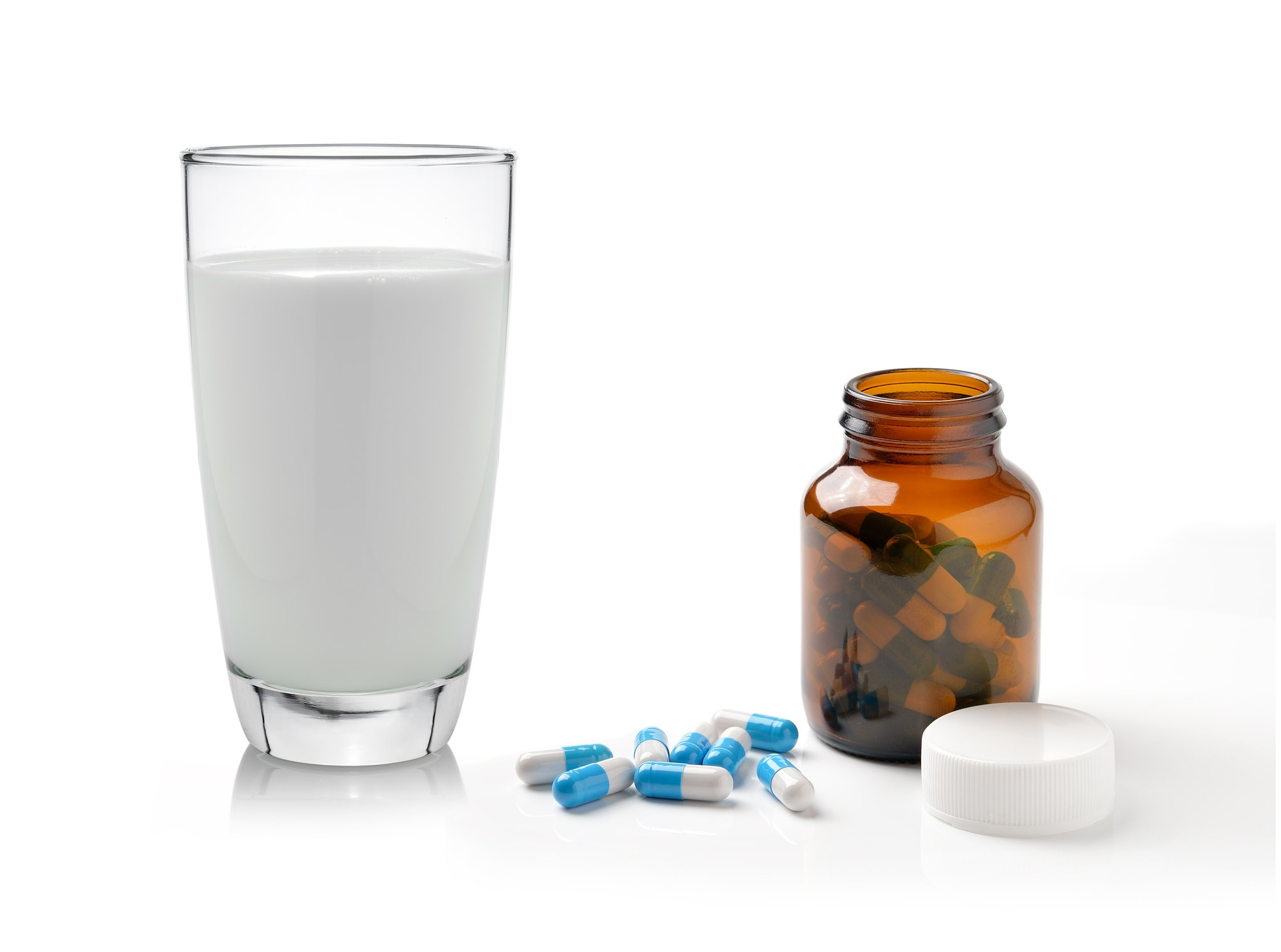 – Although, despite this, the quality of our milk does not yet reach the European level.
– Although, despite this, the quality of our milk does not yet reach the European level.
We now, despite the new technical regulations, have several stumbling blocks:
1. Control over compliance with the requirements for the main four groups of antibiotics allowed in food leaves much to be desired. On farms, the quality of milk is not checked – the analysis is carried out only at the factory where the milk is brought for processing. They may not check every batch every day, but, for example, once every 10 days.
2. Rospotrebnadzor checks should not be carried out more than once every 3-4 years. And besides, specialists cannot suddenly appear. By law, they are required to notify of their visit. That is, entrepreneurs always have time to prepare.
3. The test is carried out on the main groups of antibiotics (that is, four in total), but the content of all others will be checked only if the manufacturer himself declares that he has used them.
4. Today it is impossible to say exactly how much we consume antibiotics with milk – such statistics are simply not kept.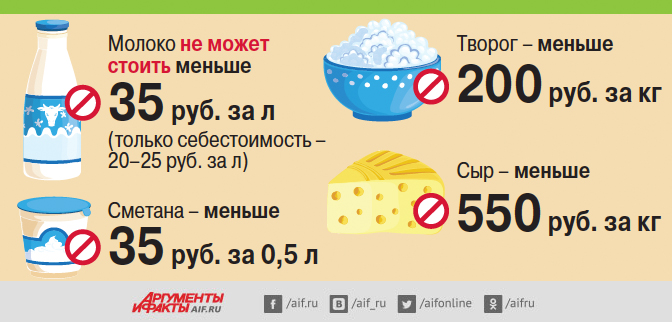 But the fact that they are in milk, albeit minimally, is for sure.
But the fact that they are in milk, albeit minimally, is for sure.
What it threatens
As usual, the consequences can be very remote. Now we consume a sufficient amount of milk (about 300 kg per year on average, although WHO recommends 36 liters, taking into account various dairy products – kefir, cottage cheese, etc.). What happens in the body, in which antibiotics slowly but surely accumulate?
According to Svetlana Sheveleva, antibiotics of the tetracycline group are used most often in the meat and dairy industry, because these drugs are cheap and work more efficiently. According to the EU, in more than 50% of cases, it was tetracycline antibiotics that were used. But let us recall that in total about 70 variants of antibiotics are used in industry.
As for tetracycline, it is not completely eliminated from the body. Accumulating in bone tissue, it can disrupt its formation, this is especially dangerous for children, because their growth may slow down.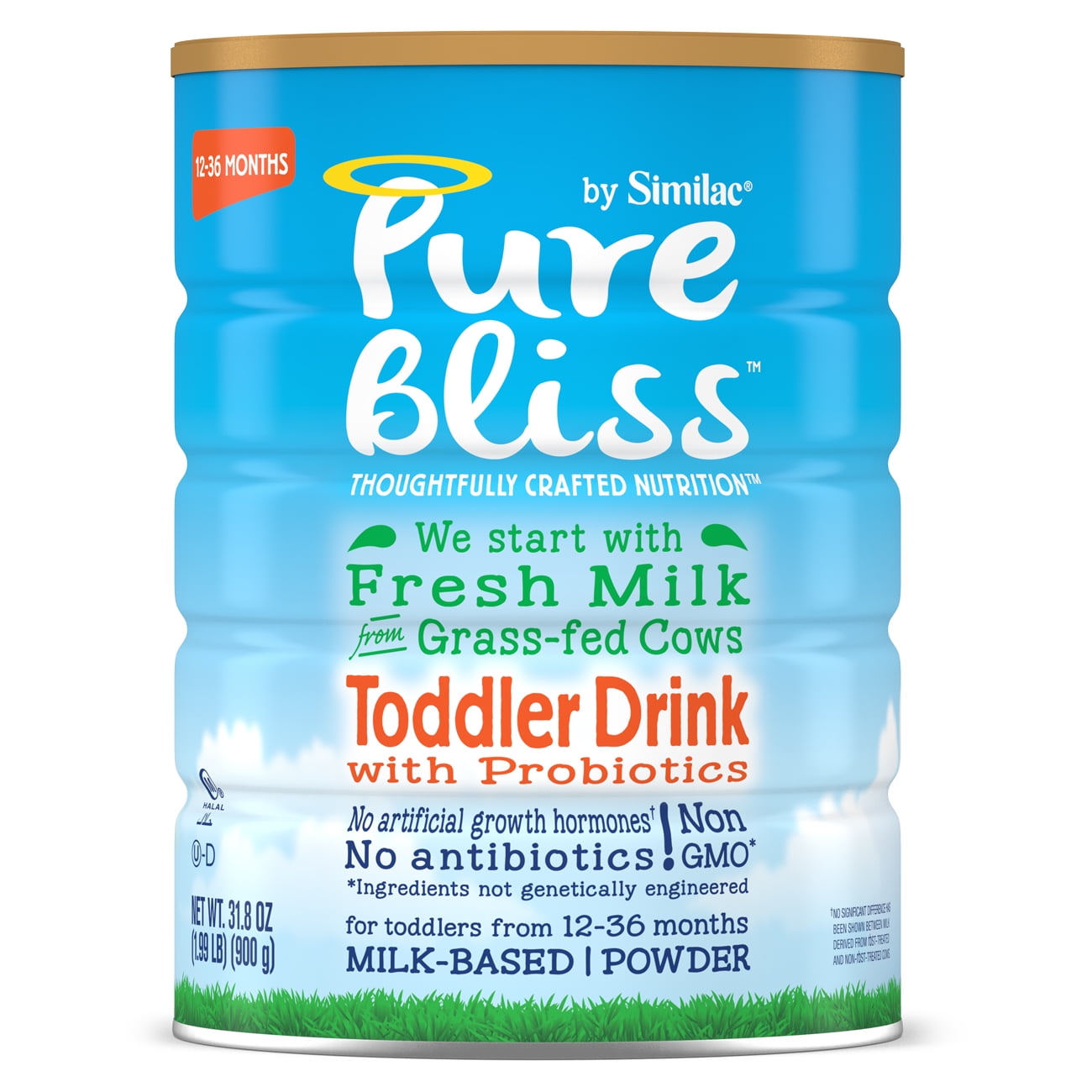 In adults, regular intake of tetracycline leads to tooth decay.
In adults, regular intake of tetracycline leads to tooth decay.
It turns out to be a paradox: we drink milk because of the calcium useful for teeth and bones, but we get a completely opposite result.
IMPORTANT
How to choose the safest
Yes, we cannot completely avoid antibiotics in our food. But there are still a few tips on how to try to avoid them:
1. Choose large trusted manufacturers that have proven themselves in the market: they value their reputation, so there is a chance that the content of antibiotics in products is within the normal range.
2. Avoid buying raw milk “from hand”. Today, farm milk has become fashionable and has become available to everyone. There are more and more milk machines that offer supposedly healthy and natural milk. In fact, it may contain antibiotics and various dangerous microorganisms. In the markets they sell “fresh” milk, which may be milk that processors simply did not buy from farmers for the factory, because it is of poorer quality.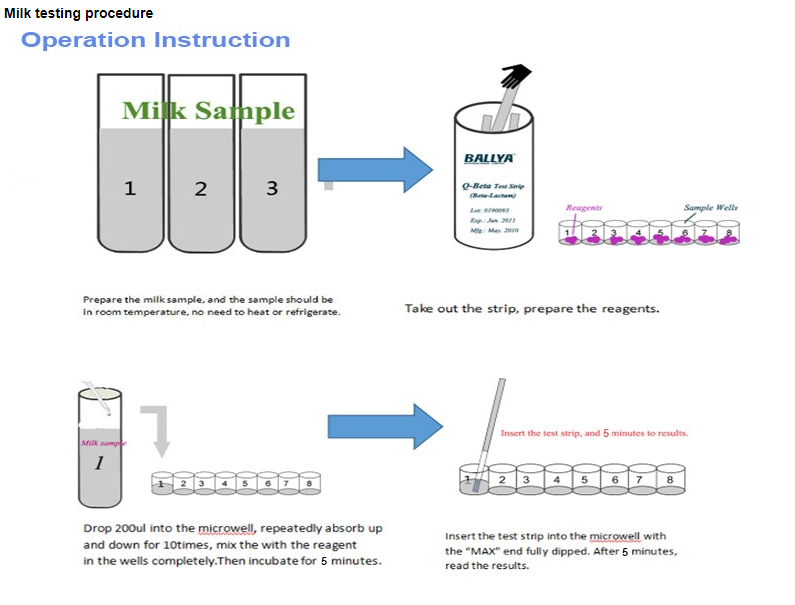
3. Try to choose fortified, functional dairy products. This is ordinary milk, but with the addition of prebiotics, vitamins, useful macro- and microelements, which provide better absorption of milk components. The requirements for such products are more stringent, so there is less likelihood of containing antibiotics.
Age category of the site 18+
The online publication (website) is registered by Roskomnadzor, certificate El No. FS77-80505 dated March 15, 2021.
EDITOR-IN-CHIEF OF THE SITE – KANSK VICTOR FYODOROVICH.
THE AUTHOR OF THE MODERN VERSION OF THE EDITION IS SUNGORKIN VLADIMIR NIKOLAEVICH.
Messages and comments from site readers are posted without
preliminary editing. The editors reserve
the right to remove them from the site or edit them if the specified
messages and comments are an abuse of freedom
mass media or violation of other requirements of the law.
JSC “Publishing House “Komsomolskaya Pravda”.


 gov/drugsatfda_docs/label/2008/050795s005lbl.pdf
gov/drugsatfda_docs/label/2008/050795s005lbl.pdf